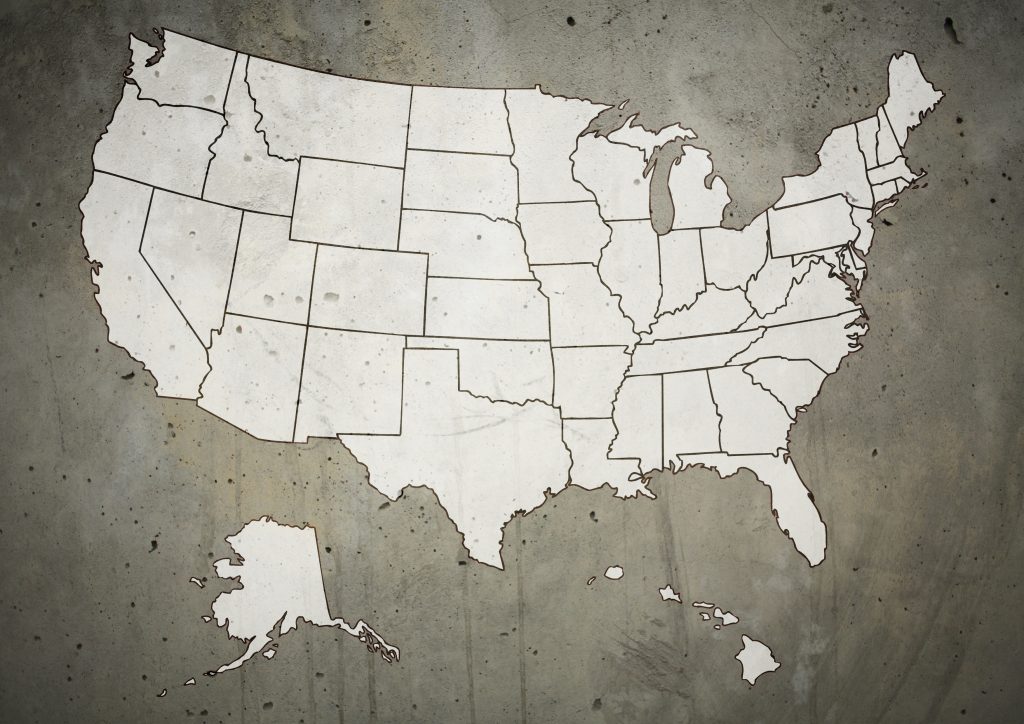This post is the second in a series of what we’re watching in state tax policy during 2018 legislative sessions. Read the first post on state responses to federal tax cuts here.
Many states struggle with a need for revenue, yet their lawmakers show little will to raise taxes to fund public services. Revenue shortfalls can prove to be a moving target. Some states with expected shortfalls are now seeing rosier forecasts. But as estimates come in above or below projections, states continue to grapple with how and whether to raise the revenue necessary to adequately fund key programs. Here are a few trends that are leading to less than cushy state coffers this year.
A history of tax cuts leading to fiscal instability
Kansas, the poster child for the detrimental effects of tax cuts on a state’s financial well-being, continues to struggle with the aftermath of the “Kansas experiment”. Even after the historic reversal of Gov. Sam Brownback’s tax cuts last year, the Kansas Supreme Court ruled that education funding still fell short of constitutional requirements. Lawmakers are holding their collective breath for better than expected revenue performance in 2018, but it’s unrealistic to expect growth strong enough to fill the gap. For those thinking through potential solutions, property tax increases are on the policy agenda.
But Kansas is hardly alone. Many other states are also cleaning up a mess left by short-sighted tax cuts.
Missouri’s state auditor warned that the state has structural budget issues that leave it unprepared for any trouble it may encounter and blamed the situation on repeated tax cuts and business subsidies. Gov. Eric Greitens and many legislators want to cut taxes anyway, and further reduce funding to higher education, even though the state has not been able to pay last year’s tax refunds on time and the governor wants to borrow $250 million to do so.
The budget coming from Arizona’s Gov. Doug Ducey does not anticipate a deficit as officials are expecting a positive cash balance. But this is not to say that the state is flush with revenue. Arizona continues to struggle with adequate funding for vital programs, many of which remain below pre-recession funding levels. The state’s bottom line has suffered from decades of tax cuts, a tradition that the state intends to continue despite an outcry from educators.
With a history of generous tax breaks and unaffordable, repeated cuts to the state’s income tax over the past decade, Oklahoma lawmakers have attempted to raise revenue, but to little avail. One of the few revenue increases last session, a $1.50 per pack cigarette tax, was ruled unconstitutional by the state’s supreme court after lawmakers enacted it as a “fee,” rather than a “tax” when they could not gain support from a three-fourths majority within the legislature. This session the Step Up Oklahoma plan seemed to be a feasible avenue for increasing revenue, but the measure also failed to garner a three-fourths majority. Budget cuts are expected to fill some of that gap as the state struggles with a lingering structural deficit. Oklahoma educators, who have been hit particularly hard by budget cuts that have forced a move to four-day school weeks, are considering a strike over pay and education funding.
Louisiana faces a $1 billion fiscal cliff driven by deep tax cuts and the economic recession following the post-Katrina economic boom. Tasked with replacing expiring temporary taxes with new revenue, lawmakers held a special session that recently closed with no agreement. As a result, a budget with deep cuts is expected this year.
West Virginia is also no stranger to tax cuts and teacher strikes. Elimination of the state’s business franchise tax and reductions to the corporate income tax have driven fiscal problems in the Mountain State. And although the state is enjoying a modestly improved fiscal situation this year, long-term concerns remain. Gov. Jim Justice recently signed a bill to give striking teachers a 5 percent pay raise. However, there is no tax increase proposed to offset the raise. Lawmakers, instead, have been touting trickle-down economics in pushing for elimination of the state’s business inventory tax.
In other states, such as North Carolina, shortfalls are on the horizon as a result of tax cuts. Tax cuts in the Tar Heel State are not yet fully in effect, but in the years to come the legislature’s budget experts project that the state will face major fiscal challenges—including a $1.2 billion structural shortfall by 2020.
Despite shortfalls, tax cut fever persists
Even with underwhelming revenue performance, ill-advised tax cuts—many in response to federal tax changes under the Trump-GOP tax law—are popping up across the country.
In Wisconsin, lawmakers spent their short legislative session doling out tax breaks only to find that a deficit may be on the horizon after all. The state started the year with a $1.6B deficit, but the Assembly passed one-time child credits and sales tax holidays, large corporate tax breaks, raised the cap on historic preservation tax credits, and raised the tax-deductible limit on contributions to 529 plans. The Badger State continues to be short on funds for transportation projects—with any relief seeming dependent on what actions are taken at the federal level.
Georgia is also underfunding core services. The state’s K-12 funding formula is short $167 million, yet lawmakers just voted to cut taxes beyond the $1 billion they would have received from recent federal tax changes. The Georgia Budget and Policy Institute (GBPI) notes that along with the fiscal risks ahead, federal changes create uncertainty in revenue projections, an economic recession could be coming, federal funding cuts are coming, and personal income tax cuts often cost more than expected.
Short-term solutions to long-term problems
Structural deficits have troubled states including Alaska, Connecticut, Illinois, New York, and Pennsylvania for years now. These states, among others, have opted to tweak their tax systems around the edges or cut state programs while punting on meaningful tax reform.
Illinois lawmakers passed an income tax increase last year, after going two years without a budget. But new revenue was not enough to address the state’s mountain of unpaid bills. State lawmakers have expressed a willingness to consider additional revenue raising options—including sales tax base expansion, taxing retirement income, and a graduated income tax. However, Gov. Bruce Rauner has taken the opposite approach by pushing to roll back the income tax rate increase and pay for it by cutting state employee health benefits and passing pension costs to localities and universities/colleges.
Lawmakers in Pennsylvania made a habit of borrowing to cover yearly deficits. Disagreements on the financial future of the state has led to three years of unsigned budgets and little commitment to raise additional revenue. But it is not for a complete lack of trying: Gov. Tom Wolf has proposed, for the third year, a tax on natural gas extraction. But broader reforms have been left off the table.
Energy Boom Goes Bust
Many of the most consequential tax debates over the past few years were in states with a significant energy sector presence. Alaska, Louisiana, New Mexico, Oklahoma, West Virginia and Wyoming have all been forced to find ways to fill budget holes and, more broadly, to think about the sustainability of their tax structures.
However, this is not to say that they’ve actually done anything to improve the sustainability of their tax structures. In fact, quite the opposite. Despite debate over how to account for wild swings in revenue from natural resources, these states have largely backed away from any structural reforms at the first mention of “oil prices on the rebound” or “energy prices up”. Even worse, a few of them have proposed cutting taxes rather than preparing for future revenue challenges sure to result from their high reliance on the energy sector.
In recent years, Alaska lawmakers—namely Gov. Bill Walker and House leadership—attempted to raise needed revenue by reinstating a state personal income tax, in addition to a range of other revenue-raising options. But lawmakers were unable to come to an agreement. This year, the debate has moved from long-term solutions to immediate action that would quickly drain the state’s savings at a high cost for low- and moderate-income residents of the state.
Wyoming lawmakers have been unable to come to a budget agreement even as the state’s legislative session draws to a close. A slight uptick in oil revenue shifted the state’s debate from weighing potential revenue-raisers to focusing solely on what to cut and how deeply to cut it. Although the approaches of the House and Senate differ, cuts to education are almost certain.
State education systems are feeling the squeeze
Each of these drivers has impacted states’ ability to provide key public services. In particular, inaction has made it difficult for states to finance quality education. Regardless of whether states are facing shortfalls, lawmakers should be proactive in ensuring that education and other public services—all of which are made possible through our tax dollars—are well funded and remain a priority in budget negotiations.




